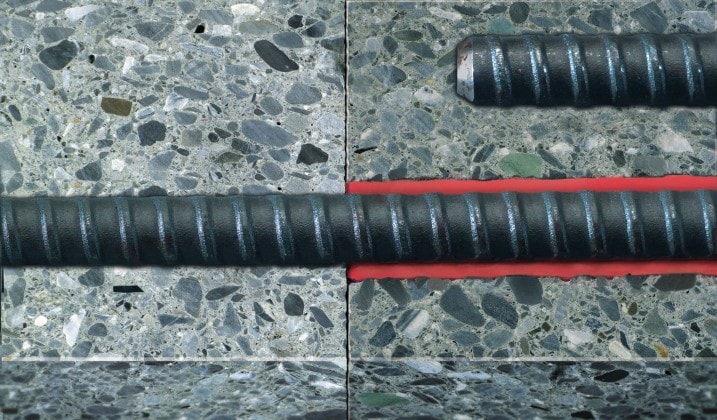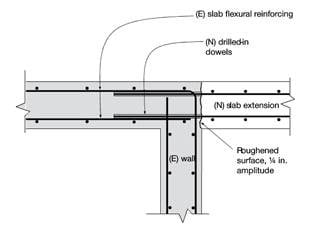
Design post-installed reinforcing bars as cast-in-place reinforcing bar


Post-installed reinforcing bars can now be designed for development using the provisions of ACI 318. The ICC-ES "Acceptance Criteria for Post-Installed Adhesive Anchors in Concrete Elements", otherwise known as AC308, now includes provisions to assess adhesive systems for use with the development and splice provisions of ACI 318 Chapter 12 (non-seismic) and Chapter 21 (seismic). The test program outlined in Table 3.8 of AC308 includes assessment of an adhesive system when reinforcing bars are post-installed to an embedment as deep as 60danchor. Adhesive systems that successfully complete the AC308 test program will receive recognition under the International Building Code (IBC) in an ICC-ES Evaluation Service Report.
Designing post-installed reinforcing bars using the development and splice provisions of ACI 318 Chapter 12 and Chapter 21 is different than designing post-installed reinforcing bars using the anchoring provisions of ACI 318 Appendix D.
Even when the anchor element is a piece of reinforcing bar it is essentially acting as an anchor bolt. As such the rebar anchor is subject to three possible failure modes in tension: steel failure, concrete breakout and bond failure; and three possible failure modes in shear: steel failure, concrete breakout and concrete pryout.

Examples of structural detailing with post-installed reinforcing bars:



Please visit our Anchor Design Center for information regarding post-installed anchoring applications.
To assist you in designing with anchor design methodology Hilti offers best-in-class design software, PROFIS Engineering. Hilti PROFIS Engineering is comprehensive design software for anchor design in concrete, masonry, and concrete-over-metal-deck base materials and includes a versatile load engine and various options for base plate analysis. PROFIS Engineering includes the Anchoring to Concrete provisions of the ACI 318 Building Code and the ACI 349 Nuclear Code and the Anchorage provisions of CSA A23.3 Annex D.
Included within PROFIS Engineering software are a number of powerful features, exclusive to Hilti, that greatly enhance the user's choice and efficiency. Users can design with Hilti mechanical and adhesive anchor systems as well as cast-in-place headed studs and headed bolts. Tutorials explain how to navigate within PROFIS Engineering. The PROFIS Engineering Design Guide is an innovative, interactive tool that explains ACI 318 Chapter 17 strength design calculations and PROFIS Engineering design assumptions.
Please visit our Rebar Design Center for information regarding post-installed rebar applications.
Hilti is the first manufacturer to offer a software solution for the post-installed rebar application. PROFIS Rebar is a web based design software that allows engineers to design post-installed rebar using the only two approved adhesive anchor systems on the market, HIT-HY 200 and HIT-RE 500 V3. PROFIS Rebar calculates tension and compression lap splice lengths, development lengths for starter bars, development lengths for special moment frames and special structural walls, and development lengths for shear dowels. PROFIS Rebar also calculates post-installed reinforcing bar embedment based on research conducted using shear friction theory.

